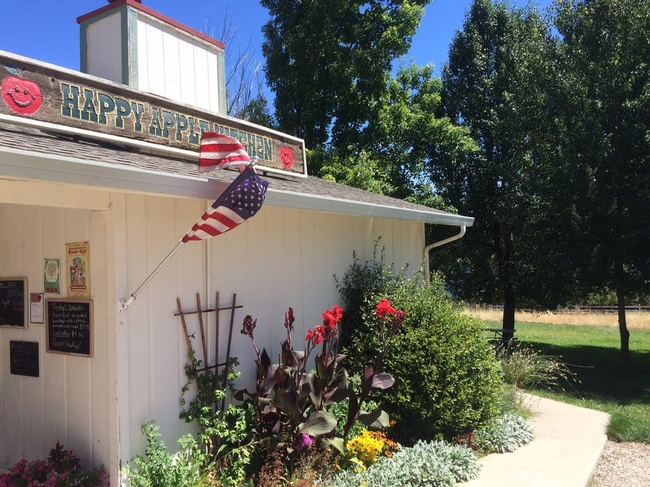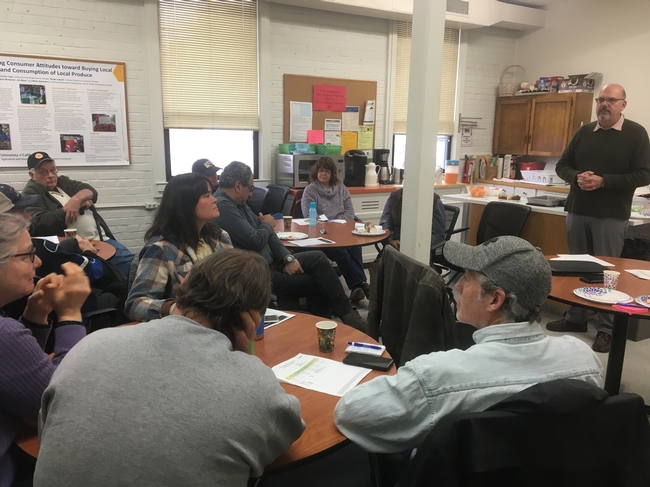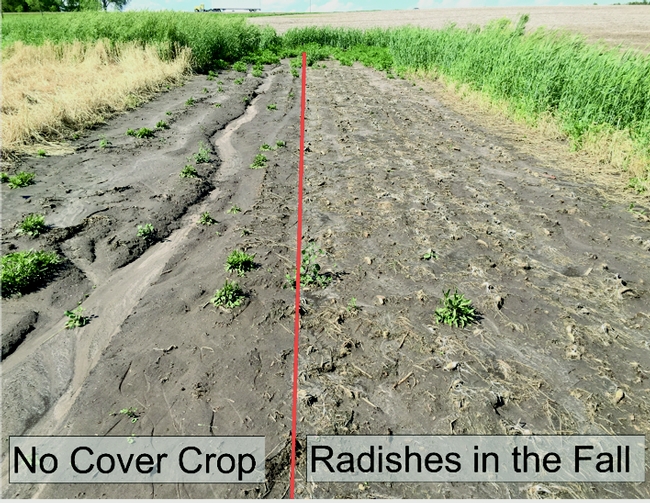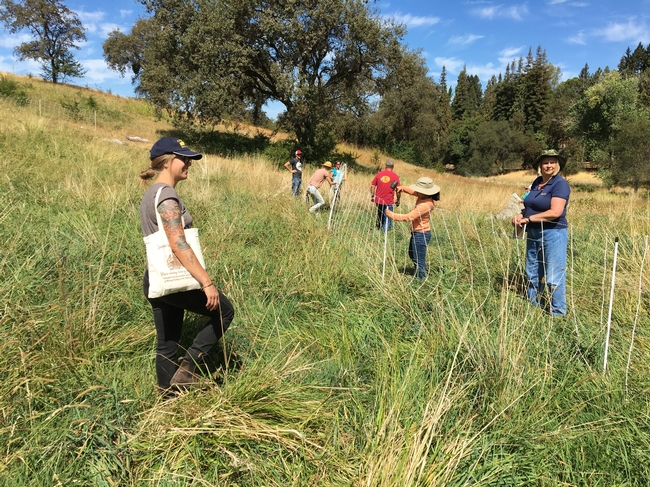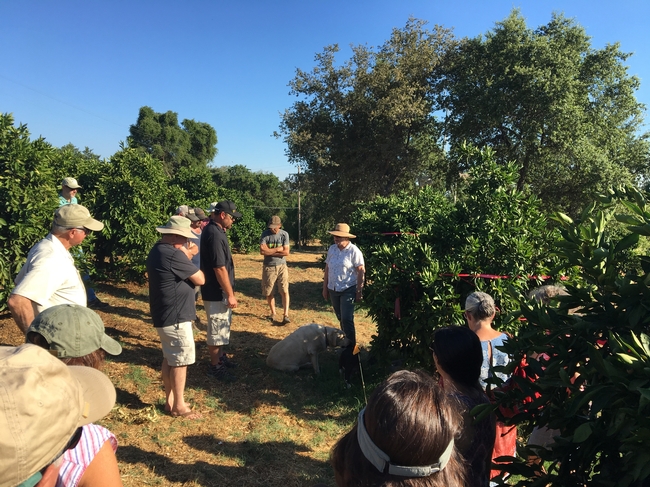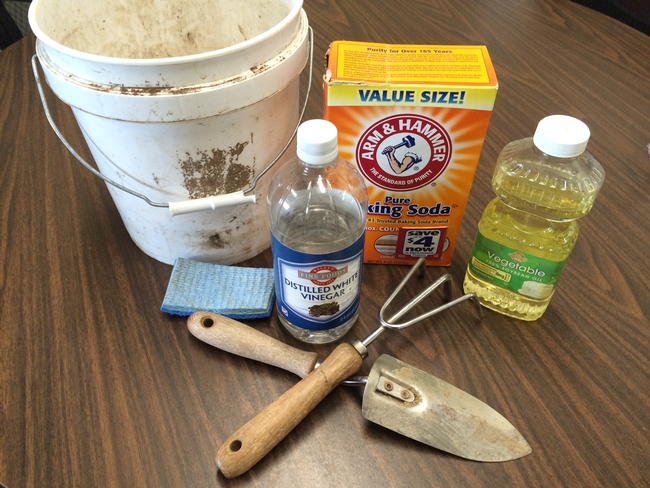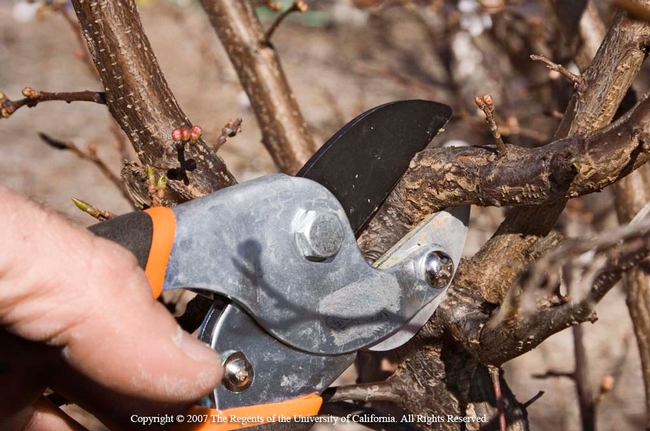- Author: Hannah Meyer
- Editor: Cindy Fake
The other day as I noticed the bright shoots of green from daffodil bulbs popping up from under the leaves, I was reminded of the silly little sprinklers lining the landscaped space near my family home. My grandpa had put in the great little irrigation system, years ago, while my parents were building the house. Not long after my grandpa passed away unexpectedly. Nobody ever thought to ask about that irrigation system until a few years later when the house was completed and the landscaping finally reached that area. Nobody knew where the valve to those sprinklers were, nobody except my dear old grandfather, who was now gone.
Thankfully, that little irrigation system was easily replaced in a day or two. What if it had been the entire irrigated pasture? There are many integral bits of knowledge you have that are essential to the daily functioning of your operation. Does somebody else know what you know about your farm or ranch? Nobody likes to think about dying or debilitating sickness or injury, but wouldn't you rather think about it now to prevent your family from having to deal with a mangled mess of undocumented details?
Operational continuity is what we call the information and planning needed to help your business partners or family successfully operate your farm or ranch in your absence. Here is a short list of some topics to consider in operational continuity.
- What needs daily attention? – Animals, gauges, sales, bills, etc.
- What do you do/need throughout the year? – Do you have a calendar of everything you do and need each month? When you order it or buy it so it is available as needed? Examples would be, seed, or vaccinations, animal feed, or batteries, which are all essential when you need them.
- Whose contact information do you either have in your personal phone or in your head? – Veterinarian, suppliers, neighbors, people you lease land from, etc.
- What passwords or security is in place that someone needs to know how to access? - Could your family or business partner access funds or your important computer files if you weren't there?
If this blog post has you thinking about planning for continuity in your operation, then you are in luck.
If you're interested in learning more about planning for the continuity of your farm or ranch - and in sharing your experiences - join us for our next Farmer-to-Farmer breakfast at Happy Apple Kitchen, February 13, from 8 to 10:30AM. Please register for this event at https://ucanr.edu/survey/survey.cfm?surveynumber=26562 This event is supported by grants from the USDA Risk Management Agency.
- Author: Hannah Meyer
A room full of farmers came out on a rainy Wednesday morning to enjoy breakfast together. Our guest speaker, Domenic Fino of Golden Pacific Crop Insurance Services, came all the way from Dinuba, California. He is a farmer, with a family legacy of farming and has been in the crop insurance business for 17 years.
Revenue - While farm acreage and the number of zeros after the dollar sign may be smaller for local farms, revenue earned is revenue that can be lost and can be insured. Fino explained a type of insurance called Whole Farm Revenue Protection (WFRP) that was designed specifically for small to medium producers with diversified operations and unique specialty crops. WFRP has been around for the last five years but has only been available in Placer and Nevada Counties in the last two years. WFRP is currently available in all counties in all 50 states.
Records - Fino brought a wealth of experience and information to local producers. He helped explain that WFRP works only if the producer is able to keep proper records and has been reporting revenue on their taxes. “Garbage in, garbage out” Fino said, speaking of how important diligence in record-keeping and setting up the policy makes processing easier when there are claims.
Reporting - Whereas most types of insurance require claims to be made right after a loss, WFRP is unique in that a producer may only complete a claim after filing taxes for the year.
Restrictions – At the farmer-to-farmer breakfast, producers also learned of a few crops that are excluded from WFRP, mushrooms and timber. However, there is a program that can provide assistance for those products called Non-Insured Assistance Program (NAP) which is accessed through the Farm Service Agency. Several mandarin growers learned that while you must have at least two crops for WFRP with the second making at least 17% of your revenue, if you only sell mandarins, there is another option.
Single Crop Insurance - Mandarin only crop insurance is already available in six Southern California counties. Any mandarin farmer may request that type of crop insurance in their county. Once enough farmers request a single crop insurance in a county, it can create a bank of information that will eventually make that type of insurance written specifically for that county.
For more information about WFRP, visit the USDA Risk Management Agency website. https://www.rma.usda.gov/Fact-Sheets/National-Fact-Sheets/Whole-Farm-Revenue-Protection-2018
Did you miss this event? If you are interested in learning more about crop or whole farm revenue protection insurance, UCCE can provide information. Call 530.889.7385 or e-mail us, cefake@ucanr.edu or dmacon@ucanr.edu
Interested in attending a farmer-to-farmer breakfast? There is another one right around the corner. Wednesday, February 13, at Happy Apple Kitchen in Chicago Park. Look for a sign-up link coming soon.
- Author: Hannah Meyer
Risk – What are you waiting for?
As the old saying goes, when it rains it pours. Nobody knows that better than we do right now, literally. For most farmers, rain is a good thing. However, for mandarin growers the amounts of rain and lengthy periods of high humidity are not good for mandarins in the middle of the season. This brings up the issue of risk on the farm. Drought, wildfire, food safety issues, crop loss, rain or frost damage are just a few of those risks.
Despite the periodic heavy rains, Placer and Nevada Counties are considered “abnormally dry” for this time of year according to the national drought monitor. After moderate and severe drought, this may seem like a fairly normal year. With shifting climates the “abnormal” could become normal over time. As we saw this fall, wildfire tore through thousands of homes and hundreds of thousands of acres. It seems the “most devastating wildfire in history” is becoming a headline each year.
While the risk of catastrophic wildfire seems to be increasing each year, rain and frost damage have historically plagued foothill farms. With travel throughout the world as easy as an overnight plane ride, international agriculture pests and diseases are also a real possibility here. I am not trying to scare you - I just want to highlight the need for farmers and ranchers to be aware of and plan for risks, and have the necessary resources to get through it.
Mother Nature is not the only risk; consider the romaine lettuce farmers on the Central Coast who had no market this fall when E. coli was found in that product. Even if one farmer did everything possible to maintain food safety, their crop may have been a total loss. Wouldn't you be glad to have crop insurance or revenue protection in place if you were in their shoes?
You will have the opportunity to hear from a fellow farmer and insurance agent, Domenic Fino of Golden Pacific Crop Insurance at the Farmer-to-Farmer Breakfast on January 9th at the Auburn UC Cooperative Extension office, from 8 to 11 AM. Sign-up today at http://ucanr.edu/survey/survey.cfm?surveynumber=26336 It's time to be informed and prepared to protect your farm.
Resources available on our website:
Risk Management https://ucanr.edu/sites/placernevadasmallfarms/Farm_Business_Planning/FBP_Risk_Management/
Drought Planning - https://ucanr.edu/sites/placernevadasmallfarms/Drought/Drought_Planning/
Financial Resources and Insurance programs https://ucanr.edu/sites/placernevadasmallfarms/Resources/Financial-Resources/
- Author: Hannah Meyer
That is a long name for a little job right? Nope! The UCCE Placer & Nevada Counties serves a growing number of small farmers and ranchers in these two counties. Over 75% of commercial farms and ranches are small scale(less than 50 acres). While the acreage of land in farms may be declining, the number of small farms is increasing. Over 500 local small-scale farmers and ranchers participate in our workshops and field meetings each year!
Why is UCCE Placer & Nevada Counties' work so important?
Increasing land values and development pressures make it difficult to start or expand a farm. The average age of our producers is over 50 years old. That means we need to train and mentor new farmers. It costs small farms and ranches more to produce a product than large-scale operations, so quality and marketing are critical. UCCE partners with farmers and ranchers for education and community-building activities. Training and mentorship in production, marketing, risk management, and business management are particularly important.
Where can I find out more about the agricultural programs available to me?
You are invited to an Open House for farmers and ranchers at the Auburn UC Cooperative Extension (UCCE)/Farm Advisor Office on December 13 from 4 to 7 PM. You can also find out more by visiting our Foothill Farming website and liking our Facebook page.
Resources:
Open House information – https://ucanr.edu/sites/placernevadasmallfarms/?calitem=433612&g=22527
Foothill Farming website – https://ucanr.edu/sites/placernevadasmallfarms/
Facebook page – http://www.facebook.com/FoothillFarming
- Author: Hannah Meyer
- Editor: Cindy Fake
Sadly, there are a lot of dull, rusted tools out there, even on productive farms. If you watch the videos at the end of this post, you will hear “Rust is always a sign of neglect” so let this be the end of neglect. Put your tools “to bed for the winter,” or prepare them for pruning season, right around the corner.
There are three main parts of tool maintenance: clean, sharpen, and lubricate. These three steps should simply be done, in that order, every single time a tool is put back in the shed. The more often you do it, the easier and more effective it is at improving the lifespan of your tools.
Clean: There are three steps - cleaning off debris, removing rust, and sanitizing to prevent the transfer of disease. Proper cleaning may require removing screws and partially dismantling the tool.
Clean – Pressurized water, or a wire brush and a little soapy water are effective when used to scrub off all dirt and debris from your tool.
Rust? – Sometimes, especially if your tools have not been constantly maintained properly, you may see a rusted tool that just isn't what it used to be. Don't worry, if you have this problem, there are some easy tips that can help take that rust off. Spray the tool with vinegar, wrap in a paper towel and cover in plastic for about three hours, up to 24 hours. Remove the paper towel and plastic. Use a brush, an old toothbrush works just fine on small projects, put some baking soda in water and use the brush to scrub off the rust. Turpentine and steel wool also work well. After you scrub the tool to remove the rust, rinse thoroughly with water.
Sanitize – To ensure your tools are not going to spread disease around your farm, sanitation is important. Wipe down the tool surface with a 10% bleach solution (10 parts water to 1 part bleach), leave it for 30 seconds and then rinse thoroughly with water. Be sure to dry and oil your tool after sanitizing to be sure it does not rust from the bleach! Learn how below.
Sharpen: Many tools, even though you may not think of them as having a blade, actually require frequent sharpening to ensure their consistent function. A shovel, for instance, needs sharpening on the edge, which helps cut through roots, make clean holes, among other things. The basic method of sharpening is pretty simple. Use caution when sharpening and be sure to wear the proper protective equipment, such as gloves and eye protection.
Stabilize – Small tools, such as hand pruning shears, may easily be held firmly with the non-dominant hand. Larger tools, such as mower blades, or loppers, may need to be held in a vise.
Sharpen - Locate the proper edges to sharpen. Remember that there is a cutting blade and a bypass edge on some tools like pruning shears. You only need to sharpen the blade. A file can be used and should only be pushed in one direction. Hold the file at an angle, usually 45 degrees to the blade. Be sure to lubricate the blade and properly tighten screws after sharpening.
If you would like to pay a professional to sharpen your tools, at our January 9th Farmer-to-Farmer Breakfast, Ruben with Sharpening Tech will available to sharpen tools. Watch for an announcement on the Foothill Farming Calendar.
Lubricate: It is very important to oil your tools, even if they do not need to be sharpened. Oil helps keep the rust at bay. If your tool comes in contact with food crops or soil, we recommend a plant-based oil, like linseed oil for wood handles, and vegetable oil for pruners and shovels. This should happen each time your tools are put away. A barrel or bucket with sand and a small amount of oil left near your tool shed will work. Simply stabbing the tool in and out of the sand mixture can remove debris and oil the tool at the same time.
Store your tools standing upright or hanging, this also helps prevent rust. Develop a system to maintain your tools and always have them in their correct place so that anyone working in your operation can find the right tool anytime. Livestock Advisor Dan Macon has developed a system of sharpening his tools and oiling all the handles on New Year's Eve each year. He also prepared a lambing box, and outfits it with sufficient supplies and freshly sharpened tools each year before lambing season. What systems do you use, or need to use, to be prepared in your operation?
Video Resources:
How to Easily Clean Rusted Gardening Tools – Organically! – Learn to use vinegar and baking soda to remove old rust from your hand tools. https://www.youtube.com/watch?v=jtdDotcHnl4
Sharpening Tools – Pruners, Loppers, Shovels and More! – GrowOrganic.com – Tips to properly clean, sharpen, and store your hand tools to improve their life and performance. https://www.youtube.com/watch?v=yn8npWqkCa8
How to Replace a Shovel Handle - Wranglerstar.com – A detailed, step by step demonstration on how to properly replace a broken shovel handle with a new one. https://www.youtube.com/watch?v=j5UH0Y4KurY


